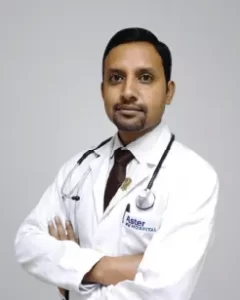
Dr. Shantling Nigudgi, Senior Consultant Radiation Oncologist, HCG Cancer Centre Kalburgi
Tobacco usage is a leading cause of cancer and death. But it is important to understand that it also leads to several other diseases and can damage nearly every organ in the human body, including the lungs, heart, blood vessels, mouth, skin, eyes, and bones. Smoking not only increases the risk of developing various cancers, but it worsens cancer outcomes. In 2019, India had the second highest number of tobacco smokers aged 15-24 and witnessed the highest increase of male smokers in this age group since 1990.
Risk Factors:
- Tobacco & Alcohol usage is leading factor for causing cancer along with family history obesity and sedentary lifestyle
- Tobacco in any form like Chewing, Smoking and hukka are harmful to health and would lead to risk of developing cancer. It is directly related to the number and duration of tobacco consumption.
- Tobacco contains many harmful substances which are carcinogenic and also a substance nicotine, which makes person addicted to tobacco
- Tobacco related cancers are mouth, Larynx, Lungs, Breast, Esophagus, Stomach, Bladder, Cervix etc.
- Preventing tobacco use at any stage will reduce the risk of developing cancer by almost less than 50%.
Warning signs of cancer to look out:
- Any sore that doesn’t heal like mouth ulcer
- Unusual bleeding from nose or per vaginal or per rectal
- Indigestion or difficulty in swallowing
- Nagging cough
- Thickening or lump in the breast
Prevention & Screening
- Having balanced diet, avoiding consumption of alcohol/ smoking, regular physical activity
- Family with history of cancer should undergo early age screening & genetic counselling
- Women (sexually active) should undergo Pap test
- Women more than 40 years should undergo bilateral breast mammography yearly or biyearly
- Men more than 50 years should undergo prostate screening by digital rectal examination and SR-PSA test
Advanced treatment techniques
Cancer treatment has shifted from one approach to all to more precise and personalized approach based on Molecular biology, genomics and tumor biology. Several new techniques or drugs are used like immunotherapy, targeted therapy, which has shown improved outcome and less side-effect.
Surgery
- Removal of tumor with aim of total clearance and free margins
- Recently newer surgical techniques and Procedures are applied for organ preservation and improved quality of life
- Minimum access surgeries are preferred like Robotic surgery based on the size & stage of tumor site.
Once Surgery is done, tumor is staged pathologically, later advised for Adjuvant treatment with either Radiation or chemotherapy or both.
Radiation
- Use of high Energy X-ray for treatment of tumor – either benign or malignant.
- Radiation is delivered either externally by linear accelerator machine or internally using radioactive source called Brachytherapy
- More than 60% of cancers sites requires Radiation Therapy during their treatment
- It is used as primary treatment i.e., Radial Radiation for cure & as adjuvant after or before surgery to kill the microscopic tumor cells.
- Recent techniques like IMRT, IGRT SRS, and SRT proved very effective for treatment in terms of improved overall survival, less Side Effects and improved quality of life
Chemotherapy:
- Use of drugs to kill cancer cells and cure or control the disease
- It is used post-Surgery as adjuvant treatment to treat the microscopic disease and pre-surgery to down stage the disease
There is no safe level of smoking, quitting it completely is the best thing one can do for their health with the help of resources available to quit smoking. Also, regular health checkups and noticing the warning signs and consulting the specialist will help in prevention and treating cancer early.






